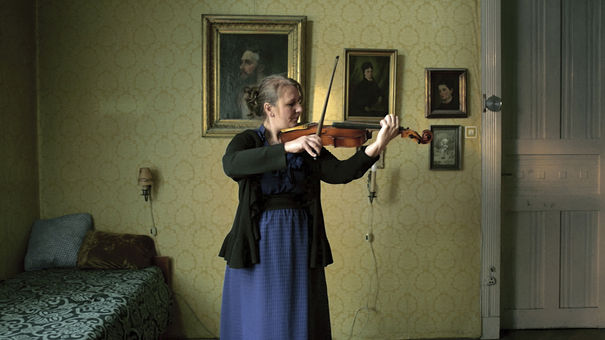Playing through the Trauma – The Short Films of Petra Szőcs
written by Janka Pozsonyi

Limp Like That
Dealing with personal and socio-political traumas is at the core of the films of the young Hungarian film director and screenwriter Petra Szőcs (1981). In her previous short film The Execution (2014), and the latest title Limp Like That (2016) both react ‘playfully’ to different kind of traumatic experiences – once through the eyes of little children, and the other time by following a family in grief.
Selected for the Short Film Competition of the 67th Cannes Film Festival, The Execution focuses on two young children – a brother and a sister – who are living in late communist Romania with their family. Their favourite game is playing out the execution of the former dictator, Nicolae Ceaușescu and his wife, which became one of the most important broadcasted events of European history. Just like in Limp Like That this form of re-enactment or imitation works as a form of psychotherapy, with the purpose that reliving something will help in letting it go. We have seen forms of re-enactment as an aesthetic strategy in many recent documentaries most notably those of Joshua Oppenheimer and Rithy Pan. The children are processing the misery of their parents, and the historic event through this game, that gives an interesting perspective on the society, that lived through these defying moments. It is shocking to see how normal these horrible events seem to them.
Born and raised in the same city of Cluj and the same era, Petra Szőcs pictured her own experiences and memories, just like she did in her latest short filmLimp Like That, which she shot in her childhood home. Devastated by the death of her husband, a woman in grief hires a young actor to play the role of the deceased around the family home. The man goes through the casting process – the most important feature is to cough and to limp like the old man did – before he settles down in his new role, and slowly starts merging into his character. Despite the fact that the setting is clearly that of the nineties in Romania, the fusion of the deceased husband and father and the young actor has a magic realist vibe.
Slowly coming to terms with the fact that “Daddikins” has left and returned to their house, the mother and daughter are creating a whole new meaning for the five stages of grief. Denial, anger, depression, bargaining and acceptance are pictured through this absurd element of the father being resurrected by the young actor. Out of the shock and denial, the mother hires him for the part, and managing the casting with a bit of anger (because he’s not coughing the right way). The depressed daughter doesn’t feel the need for this man to be around, wearing her father’s clothes and smelling like him, but thanks to the mother’s wise, persuasive words “everything is happening in the brain”, the daughter finally accepts his death, by just simply looking at him differently.
Both shorts use acting, gesticulation, and recreation as a therapeutic method, to deal with the shock and the trauma of historic events and family drama, to accept what is happening around them.

